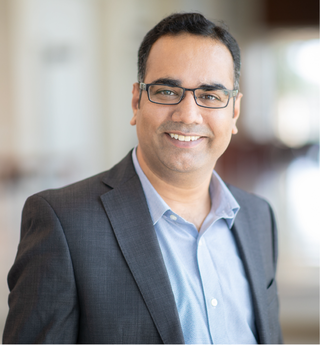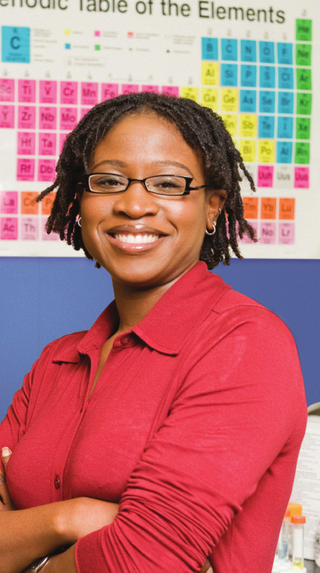
Biomedical engineering (BME) or medical engineering is the application of engineering principles and design concepts to medicine and biology for healthcare applications. BME is also traditionally logical sciences to advance health care treatment, including diagnosis, monitoring, and therapy. Also included under the scope of a biomedical engineer is the management of current medical equipment in hospitals while adhering to relevant industry standards. This involves procurement, routine testing, preventive maintenance, and making equipment recommendations, a role also known as a Biomedical Equipment Technician (BMET) or as a clinical engineer.

Regenerative medicine deals with the "process of replacing, engineering or regenerating human or animal cells, tissues or organs to restore or establish normal function". This field holds the promise of engineering damaged tissues and organs by stimulating the body's own repair mechanisms to functionally heal previously irreparable tissues or organs.
Cardiomyoplasty is a surgical procedure in which healthy muscle from another part of the body is wrapped around the heart to provide support for the failing heart. Most often the latissimus dorsi muscle is used for this purpose. A special pacemaker is implanted to make the skeletal muscle contract. If cardiomyoplasty is successful and increased cardiac output is achieved, it usually acts as a bridging therapy, giving time for damaged myocardium to be treated in other ways, such as remodeling by cellular therapies.

Bruce J. Tromberg is an American photochemist and a leading researcher in the field of biophotonics. He is the director of the National Institute of Biomedical Imaging and Bioengineering (NIBIB) within the National Institutes of Health (NIH). Before joining NIH, he was Professor of Biomedical Engineering at The Henry Samueli School of Engineering and of Surgery at the School of Medicine, University of California, Irvine. He was the principal investigator of the Laser Microbeam and Medical Program (LAMMP), and the Director of the Beckman Laser Institute and Medical Clinic at Irvine. He was a co-leader of the Onco-imaging and Biotechnology Program of the NCI Chao Family Comprehensive Cancer Center at Irvine.

Shu Chien is a Chinese–American physiologist and bioengineer. His work on the fluid dynamics of blood flow has had a major impact on the diagnosis and treatment of cardiovascular diseases such as atherosclerosis. More recently, Chien's research has focused on the mechanical forces, such as pressure and flow, that regulate the behaviors of the cells in blood vessels. Chien is currently President of the Biomedical Engineering Society.
Robert Plonsey was the Pfizer-Pratt University Professor Emeritus of Biomedical Engineering at Duke University. He is noted for his work on bioelectricity.

Donald E. Ingber is an American cell biologist and bioengineer. He is the founding director of the Wyss Institute for Biologically Inspired Engineering at Harvard University, the Judah Folkman Professor of Vascular Biology at Harvard Medical School and Boston Children's Hospital, and Professor of Bioengineering at the Harvard John A. Paulson School of Engineering and Applied Sciences. He is also a member of the American Institute for Medical and Biological Engineering, the National Academy of Engineering, the National Academy of Medicine, the National Academy of Inventors, and the American Academy of Arts and Sciences.
Robert M. Nerem, often referred to as Bob Nerem, a member of the U. S. National Academy of Engineering and the Institute of Medicine, held the Parker H. Petit Distinguished Chair for Engineering in Medicine and Institute Professor Emeritus at the Georgia Institute of Technology where he was an Emeritus Professor until his death.

Sheldon Weinbaum: is an American biomedical engineer and biofluid mechanician. He is a CUNY Distinguished Professor Emeritus of Biomedical and Mechanical Engineering at The City College of New York. He is a member of all three U.S. national academies and also the American Academy of Arts and Sciences. In 2002 when he was elected to NAM he became the sixth living individual to be a member of all three National Academies and the first to achieve this distinction since 1992. He was the founding director (1994–1999) of the New York Center for Biomedical Engineering, a regional research consortium involving the BME program at The City College and eight of the premier health care institutions in New York City. He has been a lifelong advocate for women and minorities in science and engineering. He was the lead plaintiff and organizer of a class-action lawsuit charging New York State officials with racially discriminatory funding of its two university systems, CUNY and SUNY, the first CUNY faculty recipient of the Public Service Award of the Fund for the City of New York, and the Inaugural Recipient of the “Diversity Award” of the Biomedical Engineering Society (2009). He was the inaugural chair of the Selection Committee that chooses the annual Sloan Awardees for the outstanding math and science teachers in the New York City public high schools and served in this position from 2009 to 2019. In 2022 he received the Benjamin Franklin Medal in Biomedical Engineerings from the Franklin Institute in Philadelphia. In 2023 he received the National Medal of Science from President Biden.

Ravi V. Bellamkonda is an Indian-American biomedical engineer and academic administrator. Since 2021, he has served as Provost and Executive Vice President for Academic Affairs at Emory University in Atlanta, Georgia. Bellamkonda was previously Vinik Dean of the Pratt School of Engineering at Duke University.
William Mark Saltzman was named the Goizueta Foundation Professor of Biomedical and Chemical Engineering at Yale University on July 1, 2002 and became the founding chair of Yale's Department of Biomedical Engineering in 2003. Saltzman's research aims to promote new methods for drug delivery and develop new biotechnologies to combat human disease. A pioneer in the fields of biomaterials, nanobiotechnology, and tissue engineering, Saltzman has contributed to the design and implementation of a number of clinical technologies that have become essential to medical practice today. His popular course Frontiers of Biomedical Engineering is available to everyone through Open Yale Courses.
Treena Livingston Arinzeh is an American biomedical engineer and academic.

Akhilesh K. Gaharwar is an Indian academic and a professor in the Department of Biomedical Engineering at Texas A&M University. The goal of his lab is to understand the cell-nanomaterials interactions and to develop nanoengineered strategies for modulating stem cell behavior for repair and regeneration of damaged tissue.

Omolola (Lola) Eniola-Adefeso is a Nigerian-American chemical engineer and the University Diversity and Social Transformation Professor of Chemical Engineering, Biomedical Engineering, and Macromolecular Science and Engineering at the University of Michigan. Eniola-Adefeso is also a co-founder and chief scientific officer of Asalyxa Bio. Her research looks to design biocompatible functional particles for targeted drug delivery.
Manu Omar Platt is an American biomedical engineer serving as the director of the NIH Biomedical Engineering Technology Acceleration (BETA) center. He also serves as NIBIB Associate Director for Scientific Diversity, Equity and Inclusion.

Milica Radisic is a Serbian Canadian tissue engineer, academic and researcher. She is a professor at the University of Toronto’s Institute of Biomaterials and Biomedical Engineering, and the Department of Chemical Engineering and Applied Chemistry. She co-founded TARA Biosystems and is a senior scientist at the Toronto General Hospital Research Institute.
Melissa Caroline Skala is an American biomedical engineer who is a professor at the Morgridge Institute for Research. Her research considers photonics-based technologies for personalised medical therapies. She is a Fellow of The Optical Society, SPIE and American Institute for Medical and Biological Engineering.
Erika Moore Taylor is a biomedical engineer, scientist, assistant professor, "Forbes 30 under 30 honoree," financial advisor, and the founder of a scholarship program that has been featured on CNBC.
Cynthia "Cindy" Reinhart-King is an American biomedical engineer who is a University Distinguished Professor at Vanderbilt University. Her research considers cell motility and adhesion. She serves as president of the Biomedical Engineering Society.
Alisa Morss Clyne is an American mechanobiologist. She is a Full Professor and Associate Chair of Diversity, Equity, and Inclusion in the Fischell Department of Bioengineering at the University of Maryland, College Park. Clyne is an expert in endothelial cell biology, biomechanics, and metabolomics.










